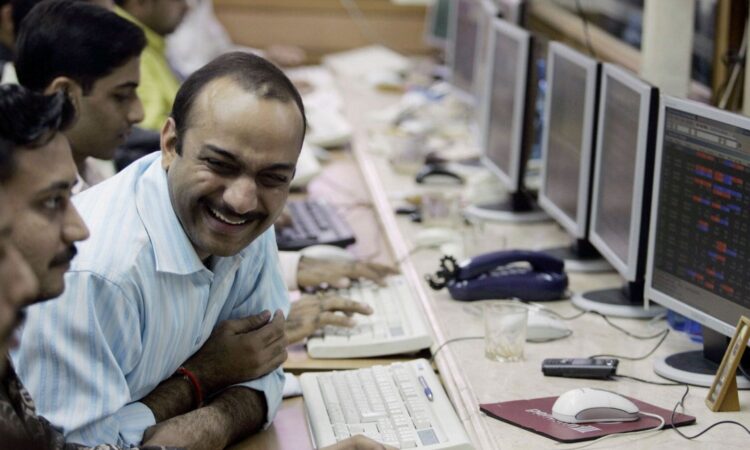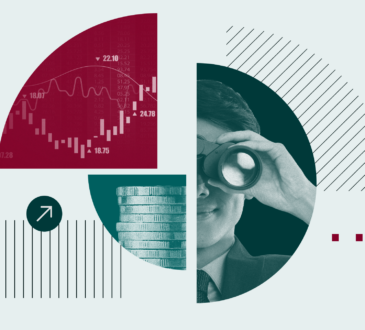Sensex jumps 676 points, investors earn ₹6 lakh crore; what drove the Indian stock market today? EXPLAINED

Stock market today: The Indian stock market ended in the positive territory on Monday, August 18, with investors cheering signs of easing global headwinds. Hopes of a possible end to the Russia-Ukraine conflict, indications from US President Donald Trump that he may reconsider secondary tariffs on India, and S&P’s upgrade of India’s credit rating together lifted sentiment and fueled risk appetite.
The Sensex opened at 81,315.79 against its previous close of 80,597.66 and surged over 1,100 points, or 1.4 per cent, to an intraday high of 81,765.77.
The NSE counterpart, the Nifty 50, started the day at 24,938.20 against its previous close of 24,631.30 and jumped 1.6 per cent to an intraday high of 25,022.
However, the benchmarks pared gains later. The Sensex ended 676 points, or 0.84 per cent, higher at 81,273.75, while the Nifty 50 settled at 24,876.95, up 246 points, or 1 per cent.
The overall market capitalisation of companies listed on the BSE rose to over ₹451 lakh crore from ₹445 lakh crore in the previous session, adding ₹6 lakh crore to investors’ wealth in a single day.
What drove the Indian stock market higher?
Here are five key factors that might have boosted the Indian stock market.
1. Market cheers PM Modi’s GST reform announcement
Prime Minister Narendra Modi announced the next-generation GST reforms in his Independence Day speech at the Red Fort.
“Next-generation reforms will be introduced under the GST framework. This Diwali, these GST reforms will bring a double bonus to the people, enhancing their celebrations,” the PM said.
GST reforms could boost computation in the country. According to reports, most of the products and services attracting a tax rate of 12 per cent and 28 per cent will be shifted to the 5 per cent and 18 per cent slabs, respectively.
“India’s GST rationalisation is growth-accretive, big-ticket reform. We see this as a major market mover and upgrade our Nifty target to 28,000 for Sep-26, while recommending investors to play this through Autos and Cement,” said brokerage firm Emkay Global.
“This will speed up the formalisation of the economy and improve the competitiveness of Indian companies. We think the government should absorb the revenue loss through the higher deficit, as the growth accretion will cover the shortfall within two to three years,” said the brokerage firm.
According to VK Vijayakumar, Chief Investment Strategist, Geojit Investments, the Prime Minister’s declarations on the next major reforms in GST by Diwali are a big positive.
He said sectors like autos and cement which are presently in the 28 per cent tax slabs are expected to benefit. TVS Motors, Hero, Eicher, Mahindra and Mahindra and Maruti are likely to respond positively to the news. Insurance companies are also expected to benefit from the GST revision.
2. Easing geopolitical headwinds
The US President will meet his Ukrainian counterpart, Volodymyr Zelensky, on Monday after he met Russian President Vladimir Putin on Friday, August 15.
While the Trump-Putin meeting concluded without a solid agreement, according to reports, the focus is on the Trump-Zelensky meeting, and the market hopes for a favourable outcome.
According to Reuters, “Russia would give up small occupied areas of Ukraine, while Kyiv would hand over parts of eastern territory that Moscow has so far failed to seize under the peace plan discussed at the Alaska summit between Putin and Trump.”
“The outcome of today’s meeting at the White House for finding a solution to the Russia-Ukraine conflict will be keenly watched by the market,” said Vijayakumar.
3. S&P Global upgrades India’s rating
Ratings agency S&P Global upgraded India’s sovereign rating to BBB from BBB—on August 14, while maintaining the economic outlook as “stable.”
It was the first sovereign rating upgrade from S&P Global Ratings since 2007.
Further, the rating agency also revised India’s short-term rating to A-2 from A-3, and improved the transfer and convertibility assessment to A- from BBB+.
The move is seen as a long-term positive for the Indian economy and could open the door for fresh global funds.
“A rating upgrade to a higher investment-grade category of BBB can open the door for new pools of global funds’ capital. All of this will lower India’s risk premia and consequently, lower the cost of funding across macro agents’ curves, including corporates —especially those borrowing abroad,” said Madhavi Arora, Chief Economist at Emkay Global Financial Services.
According to brokerage firm Motilal Oswal Financial Services, “S&P Global’s upgrade of India is a significant macro and structural positive for the overall Indian market, likely supporting incremental valuation expansion driven by lower bond yields and decreased risk perception.”
“A higher sovereign rating will drive better FPI debt flows and lead to better USDINR and government bond yields. Foreign currency-heavy borrowers can benefit from lower interest costs. Indian financial companies, such as Bajaj Finance, accessing the ECB market could see a 15-20bp reduction on their coupon payments,” said the brokerage firm.
4. Trump hints secondary tariffs on India may be removed
Trump has signalled he might rethink secondary tariffs on India and China in the next two to three weeks.
After his meeting with Putin in Alaska on August 15, Trump said he will not have to think about imposing retaliatory tariffs on countries like India and China for procuring Russian oil.
Last week, Trump announced an extra 25 per cent tariff on Indian imports to the US due to India’s continued imports of Russian oil. This raised the overall tariffs on Indian goods to 50 per cent, almost halting certain imports to the US.
Meanwhile, according to a PTI report, the next round of India-US negotiations on the proposed bilateral trade agreement (BTA), scheduled for 25–29 August, is expected to be deferred.
“India-US trade talks are unlikely to happen before August 27th deadline. The ‘ Trump Sword’ of a 50 per cent tariff dangling on India will restrain the market enthusiasm, which can be triggered by the positive news mentioned earlier,” Vijayakumar noted.
5. Market hopes for earnings recovery
With favourable growth-inflation dynamics and anticipation of increased consumption, the market is discounting earnings recovery in the third and fourth quarters of the current financial year. This could sustain the market’s current valuation and may pave the way for fresh highs in the coming months.
Brokerage firm Motilal Oswal believes GST reforms announcements, S&P rating upgrade, and a potential pause on US tariffs can collectively improve market sentiments and set the stage for an upmove after a muted performance over the past 12 months.
“Nifty is trading at a reasonable 12-month forward PE of 20.8 times (in line with its past 10-year average) and could expand from here, given the improving earnings trajectory. Our team estimates FY26 PAT growth of 9.8 per cent for Nifty. Given a favourable base effect, markets are likely to respond positively, especially as multiple government measures are expected to improve overall growth dynamics and sentiments in the second half of the year (2HFY26),” said Motilal Oswal.
Read all market-related news here
Read more stories by Nishant Kumar
Disclaimer: This story is for educational purposes only. The views and recommendations expressed are those of individual analysts or broking firms, not Mint. We advise investors to consult with certified experts before making any investment decisions, as market conditions can change rapidly and circumstances may vary.

